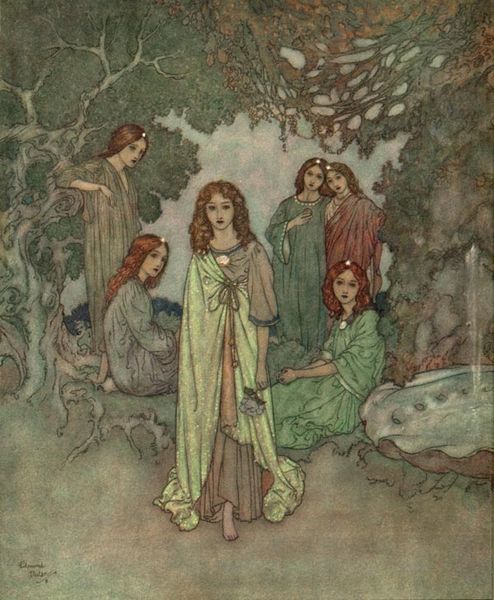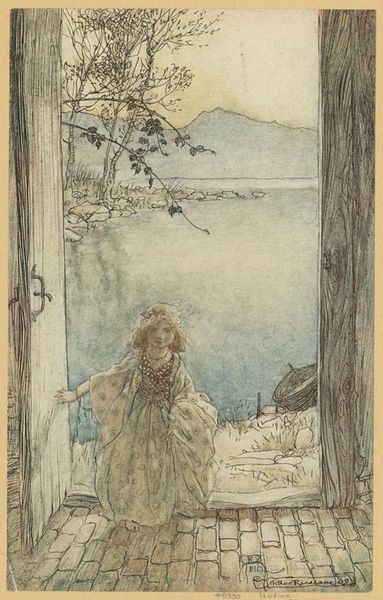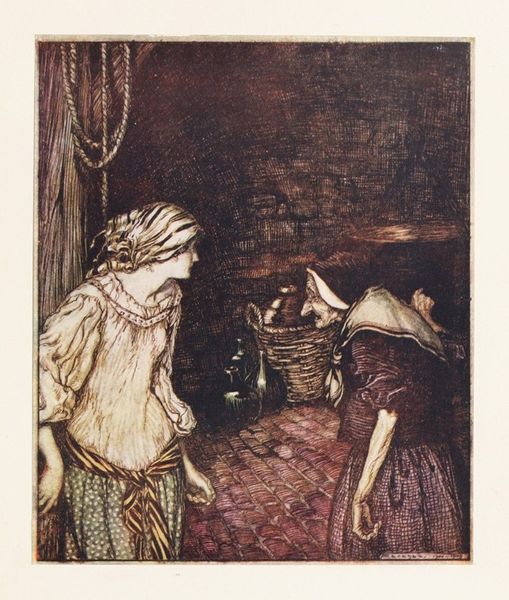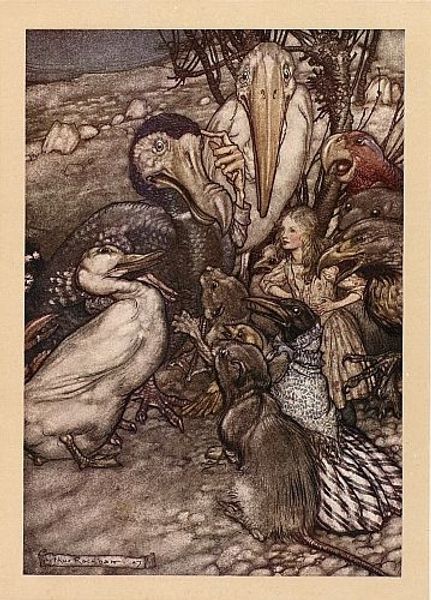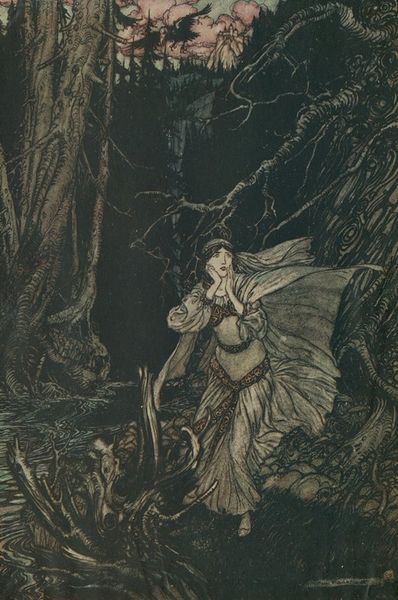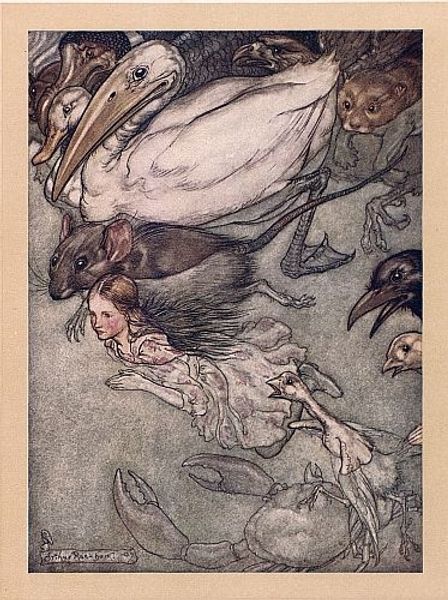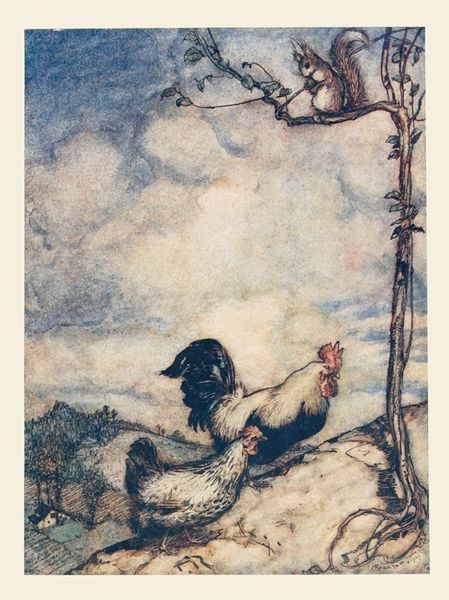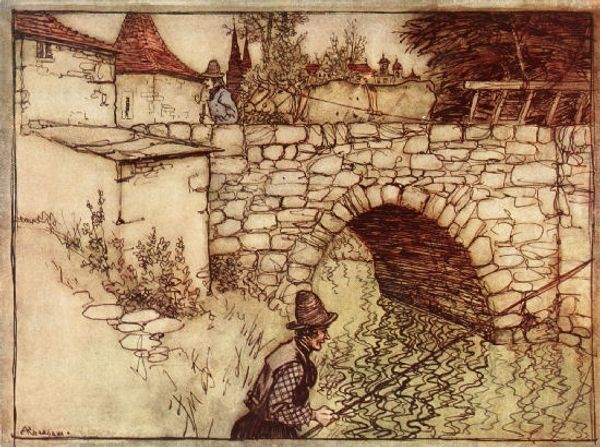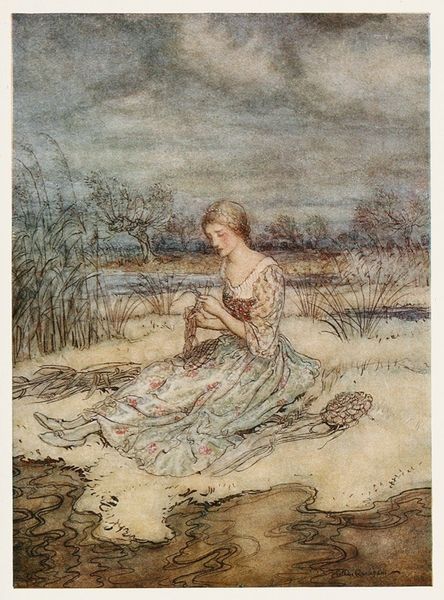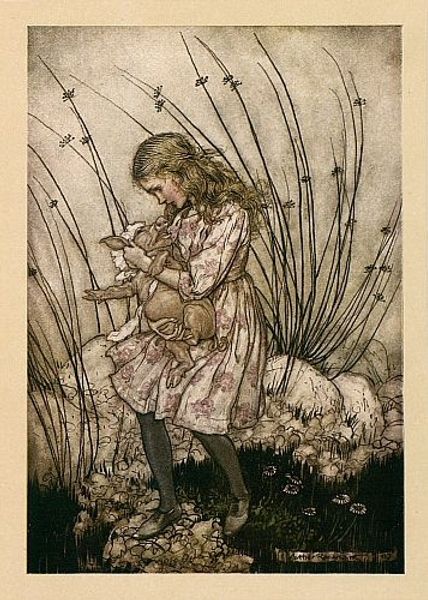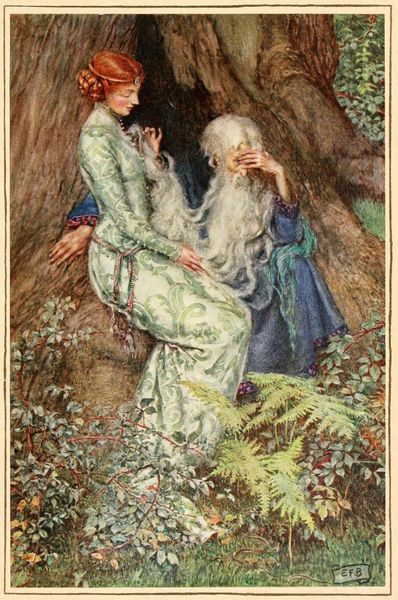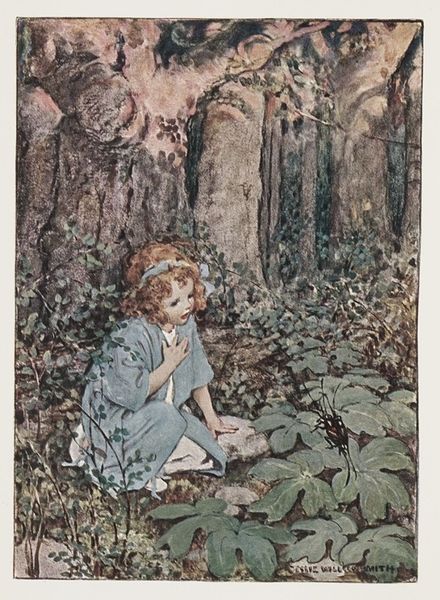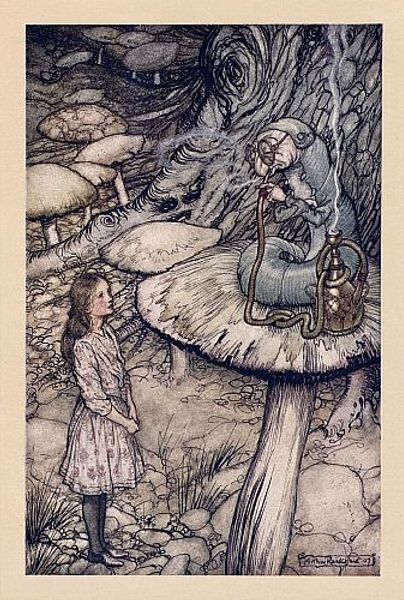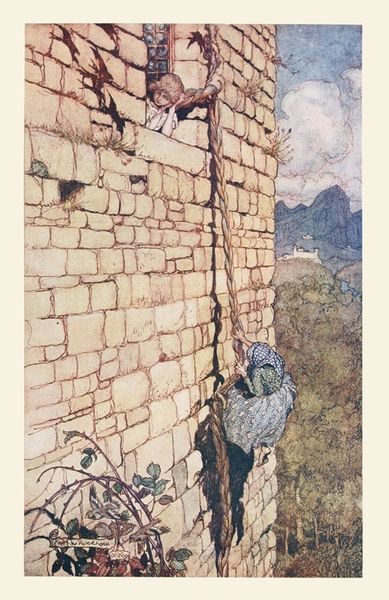
Copyright: Public Domain: Artvee
Editor: This is "Alas! dear Falada, there thou hangest," a watercolour illustration by Arthur Rackham, created in 1920. I find it haunting, particularly the shadow cast on the stone wall. What do you see in this piece, beyond the fairy-tale aesthetic? Curator: The haunting quality you observe is potent. Rackham's illustration invites us to consider the voiceless: Falada, the horse, embodies silenced narratives of loyalty and sacrifice. Its spectral presence—marked by that very distinct shadow—accuses. How might we view the princess's seeming innocence alongside this violent act? Editor: You mean, is she complicit? I hadn’t really considered her role. Curator: Exactly. The image, pulled from Grimm’s fairy tales, opens up to critique power structures and female agency. Is she a victim or an agent within this patriarchal system? Rackham's romantic style is not simply decorative; it frames complex issues of gender, class, and the violence inherent in societal structures. What does the image suggest about the girl's transition and journey into womanhood, if anything? Editor: I suppose it isn't a straightforward depiction of good versus evil, but a visual representation of difficult choices and oppressive constraints. Thinking about fairy tales as social commentary gives a completely new lens. Curator: Indeed. Rackham, through this image, prompts us to actively engage with the narratives we inherit and to question the power dynamics they represent. It’s less about escapism and more about critically examining the stories that shape our understanding of the world and woman's role within it. Editor: That is definitely something to consider as I learn more about art and social responsibility. Thanks!
Comments
No comments
Be the first to comment and join the conversation on the ultimate creative platform.
